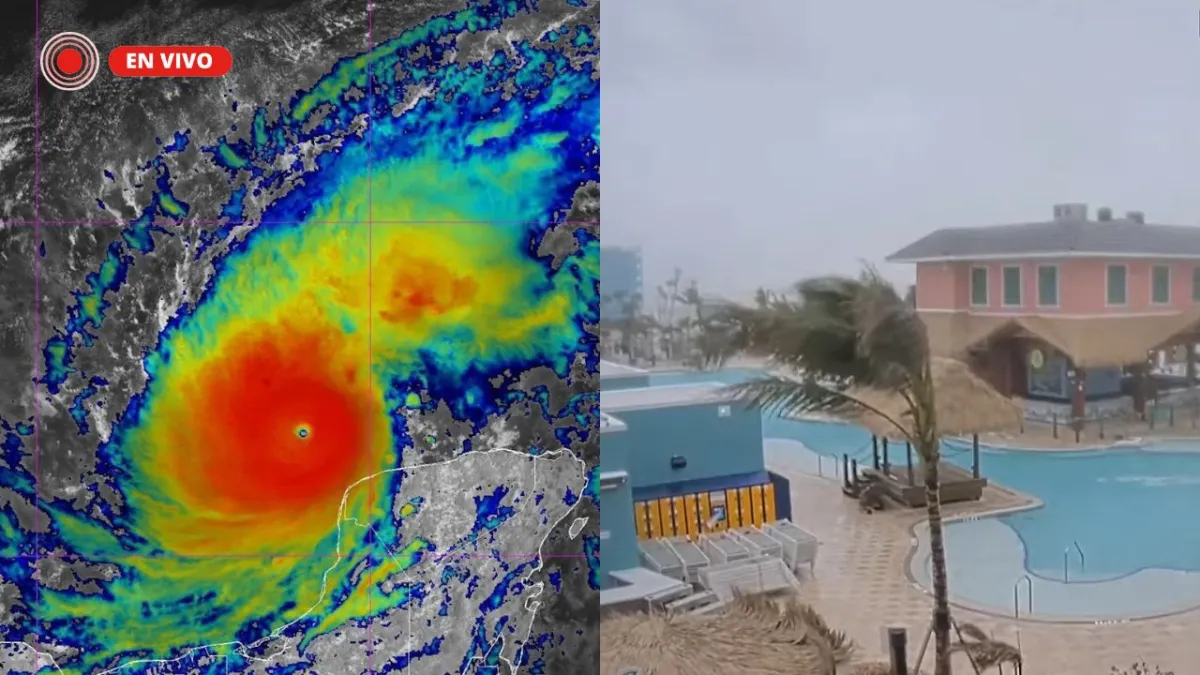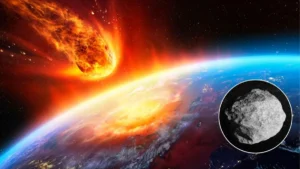
Hurricane Milton stunned everyone with its devastating force as it approached the Florida coast. With winds reaching 260 kilometers per hour, this meteorological phenomenon has generated a series of live videos that capture its impressive arrival. The images have not only shown the magnitude of its winds, but also They prepared the community.
Live videos have been a crucial tool to keep the population informed about the progress of Hurricane Milton. From the first images captured by the International Space Station to live broadcasts from the shores of Florida, These recordings offer a real-time perspective of the situation. Spectators can watch as strong winds whip trees and beaches receive waves that reach into homes.
The importance of real-time coverage of Hurricane Milton
Real-time coverage is essential during extreme weather events like Hurricane Milton. It allows authorities and citizens to make informed decisions about evacuations and security measures. For example, citizens have received alert notifications about the current cyclone situation.
In addition, these live events have served to raise awareness about the severity of the hurricane and the need to be prepared to face its consequences.
Community Preparations and Response
Evacuations and shelters
Before the arrival of Hurricane Milton, authorities ordered mass evacuations in the coastal areas of Florida. Thousands of residents have been moved to emergency shelterswhere they are provided with food, water and medical care.
Security measures
The security measures implemented include the closure of airports, the suspension of public services and the activation of rescue teams. Besides, People are recommended to create emergency kits and reinforce their homes with shutters or wooden boards.
Cities most affected by Hurricane Milton
Tampa Bay: the most affected city
The city of Tampa Bay is located at the epicenter of Hurricane Milton’s path. It is expected to make landfall in this area, causing the worst storm the region has seen in the last 100 years.authorities have issued mandatory evacuation orders due to destructive storm surge and flooding that could reach up to 10 feet high.
Other cities at risk
In addition to Tampa Bay, other cities in Florida that will face major impacts include:
- Charlotte: This city could experience strong winds and torrential rain, increasing the risk of urban and river flooding.
- Big Mouth: With its coastal location, it is in danger of significant storm surge and severe structural damage.
- Anna Maria Island: This tourist site could see its infrastructure damaged by hurricane winds and flooding.
- Anclote River: Communities along the river should prepare for sudden and potentially catastrophic flooding.
- Chokoloskee: This small coastal community is also in the path of the hurricane and could face extensive damage due to storm surge.
What is the exact path of Hurricane Milton and how long will it last?
Hurricane Milton, currently Category 4, follows a path that will lead it to impact the west coast of Florida, specifically in the Tampa Bay area, during the night of Wednesday, October 9 and the early hours of Thursday, October 10. Milton formed in the Gulf of Mexico and has been moving northeast at a speed of 22 km/h.
It is expected to make landfall on the west-central coast of Florida, primarily affecting Tampa and Sarasota, and after crossing the state, will head towards the Atlantic Ocean.
Duration of Hurricane Milton
The impact of Hurricane Milton in Florida will last approximately 24 hours in several ways:
- Tampa: from Wednesday at 4:00 pm to Thursday at 3:00 pm Maximum winds of 128-160 km/h with gusts of up to 185 km/h are expected.
- Sarasota: Its impact would be from Wednesday at 3:00 pm until Thursday at 3:00 pm Maximum winds of 145-177 km/h with gusts of up to 225 km/h.
- Orlando: Here it would occur on Wednesday at 9:00 pm until Thursday at 6:00 pm Maximum winds of 112-144 km/h with gusts of up to 160 km/h.
What are the differences between a Category 4 and a Category 5 hurricane?
Hurricanes are extremely dangerous natural events. In particular, a category 4 cyclone has sustained winds ranging between 209 and 251 km/h. These gusts can cause significant damage to buildings, trees and power lines.
Hurricanes of this category can cause devastating havoc. Well-built homes can experience serious damage to roofs and exterior walls. Many trees will be uprooted or snapped, and power lines may fall, resulting in widespread power outages. Additionally, storm surge, which represents sea level rise due to the storm, It can reach heights of 4.5 to 6 meters, causing significant flooding in coastal areas and putting human life at risk.
On the other hand, a category 5 hurricane has sustained winds of 252 km/h or more. These blows are incredibly destructive and can level virtually any structure in their path.
The damage caused by a category 5 hurricane is even more severe. Well-built homes can be completely destroyed, and communities can become uninhabitable for weeks or months. Most trees will be uprooted, and power lines and poles will be knocked down, causing prolonged power outages. The storm surge in this case can exceed 6 metersflooding coastal areas and causing massive devastation. Floods can move inland, affecting areas that would not normally be considered at risk.
Source: https://www.noticiascaracol.com/mundo/los-impactantes-videos-en-vivo-que-muestran-la-llegada-del-huracan-milton-a-florida-so35


